Ghana is rich in a diverse array of minerals, including gold, bauxite, diamond, manganese, iron ore, copper, chrome, nickel, limestone, and quartz. Despite this
variety, the mining industry primarily focuses on four major minerals: gold, diamonds, manganese, and bauxite. Foreign companies dominate large-scale mining activities in Ghana, although the government retains a 10 percent stake in most operations. Small-scale mining is reserved for Ghanaian citizens, ensuring local participation in the sector.
The mining industry in Ghana has been a consistent contributor to the country’s GDP, accounting for over 7 percent from 2018 to 2020. However, a decline to 5 percent occurred in 2021 due to reduced gold and bauxite production. The sector remains the fourth-largest contributor to Ghana’s annual gross product, trailing behind crop produc- tion, manufacturing, and trade, with a contribution of GHS 5.8 billion ($ 482.2 million) in the last quarter of 2023. The sector also plays a significant role in the government’s fiscal revenue collection, with a notable 60 percent increase in revenue between 2018 and 2019, pri- marily driven by rising commodity prices. Mining operations pay a 5 per- cent mineral royalty on total revenue to the Ghana Revenue Authority (GRA), contributing 18.12 percent of the GRA’s total collections in 2020.
Ghana is one of Africa’s leading gold producers, alongside South Africa and Burkina Faso, collectively yield- ing 346 tonnes of gold in 2021. Ghana surpassed South Africa to become Af- rica’s top gold producer in 2021, with a production of 129 tonnes, contributing significantly to the country’s mining ex- port revenue, which was predominantly derived from gold (approximately 96 percent in 2021).
While Ghana’s mining industry was formerly state-owned, it now boasts significant private sector involvement, evidenced by the presence of major multinational mining companies like Newmont Goldcorp, Anglo Gold Ashanti, and Gold Fields. Among these, Gold Fields Ghana emerged as the highest gold producer in 2021, despite a slight decrease in production compared to the previous year. Various mines across Ghana contribute to the coun- try’s gold production, including Obuasi, Iduapriem (Tarkwa), Damang, Prestea, Bogoso, Wassa, Kenyasi, Akyem, Chi- rano, Teleku Bokazo, Kwabeng, and Osino.
Ghana’s bauxite industry, dating back to 1914, is centred around the Awaso mine, operated by the Ghana Bauxite Company with the Government of Ghana holding a 20 percent stake and private investors owning 80 percent. Despite reaching its peak production of 1.1 million metric tonnes in 2017, revenue declined due to a global slump.
However, Ghana lacks an integrated aluminium industry, as there is no alumina plant to process bauxite ore. VALCO, responsible for alumina smelt- ing, currently meets most demands, but with increasing demand, production volume must rise to meet needs. While Ghana handles major production steps in aluminium processing, VALCO im- ports alumina for aluminium produc- tion despite abundant bauxite reserves.
Manganese, the fourth most popular metal in metallurgy and the fifth most abundant globally, serves various pur- poses. Primarily used in steel produc- tion as an alloying element, manganese is also essential in battery production, water treatment, fertiliser micronutrient creation, and paint pigment production. Major importers of manganese include China, India, Norway, Russia, and South Korea.
Ghana ranks as the sixth-largest man- ganese producer globally, contributing 3.2 percent to global production. Man- ganese ore production began in Ghana in 1914 in Nsuta-Wassa. The Ghana Manganese Company (GMC), Ghana’s sole manganese producer and exporter, operates the mining concession cover- ing 170 square kilometres in and around Nsuta in the Western Region. The com- pany is privately held, with Consoli- dated Minerals Africa Limited owning a 90 percent stake and the Government of Ghana holding a 10 percent free carried interest. However, only about 3 percent of the concession has been mined to date.
Diamond mining in Ghana is primarily concentrated in the Birim Valley near Akwatia in the Eastern Region. The extraction process typically involves small-scale miners working with both alluvial and in-situ diamond deposits. Despite having several diamond depos- its, Ghana has not yet emerged as a ma- jor global diamond producer. The state- owned Great Consolidated Mining Company(GCDL) is the primary entity engaged in diamond mining activities, operating within the Birim River Basin.
Diamond mining in Ghana predomi- nantly employs alluvial mining meth- ods, where diamonds are often found in gravel layers alongside materials like mud, clay, and marine debris. This method involves constructing barriers to collect water in designated areas, such as the Akwatia-Birim valley, where the gravel containing diamonds is collected, sifted, and processed.
Ghana primarily exports diamonds to Belgium and the Netherlands. How- ever, the country’s export of diamonds has experienced a decline, attributed in part to the shutdown of the Great Con- solidated Mining Company in 2019. Additionally, stringent regulations im- posed on small-scale mining activities in 2017, aimed at mitigating environ- mental damage, led to a sharp decrease in Ghana’s diamond output.
The Ministry of Lands and Natural Resources; Minerals Commission; For- estry Commission; Lands Commission; Ghana Integrated Aluminum Develop- ment Corporation; Precious Minerals Marketing Company; Ghana Chamber of Mines; and the Environmental Protection Agency are some of the regula- tors and industry bodies involved in the sector.
SECTOR OPPORTUNITIES
• Establishment of new bauxite mines and refineries.
• Development of Ghana’s diamond industry.
• Development of Ghana’s iron and steel reserves.
• Establishment of an aluminium smelter.
INVESTMENT INCENTIVES
• Mining companies get conces- sionary rates for the import of plant, machinery, and equipment meant pur- posely for mining.
• In addition, mining companies enjoy a capital allowance of 20 percent straight line on mining assets for five years and an investment allowance of 5 percent in the first year.
• Ghana’s main resources include gold, diamonds, manganese, and baux- ite, but the country also has untapped reserves of iron ore, copper, chrome, nickel, limestone, quartz, and mica.
The average price of gold remained at its all-time high at 2,000 ($/troy oz) in 2022 as global de- mand for gold increased in the context of high inflation. The price of gold increased by 9 percent in the first quarter of 2023 because of a weakening dollar, continued geopolitical uncertainty related to the war in Ukraine, and persistently high inflation. Gold prices are expected to average $1,900 per troy ounce in 2023, 6 percent higher than in 2022, but could decline in 2024 as the global economy begins to recover gradually and inflationary pressures recede.
Source: 7th Ghana Economic Update. Price Surge: Unravelling Inflation’s Toll on
Poverty and Food Security. Produced by the World Bank Group. https://documents1.worldbank.org/curated/en/099072023055014341/pdf/P177994046644e0e- 20b3dd057c81347c0ef.pdf


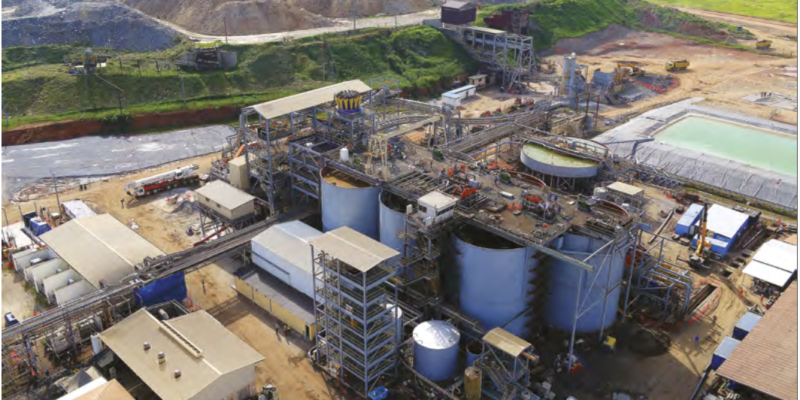
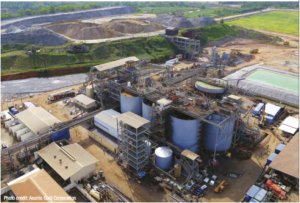
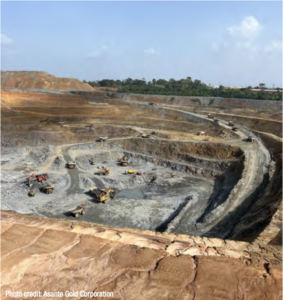
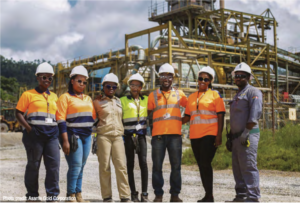
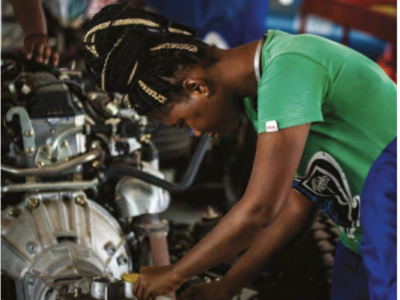
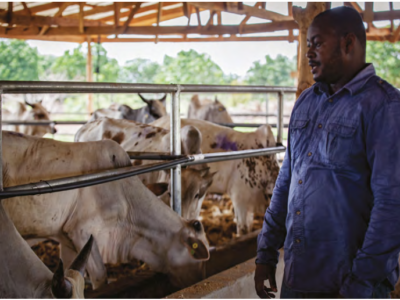
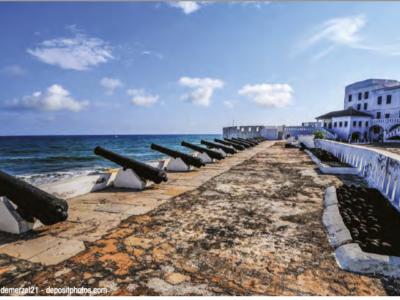


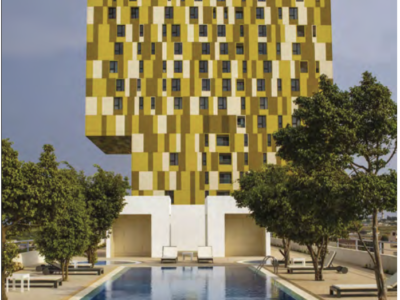



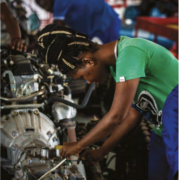
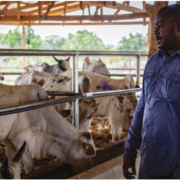
Comments